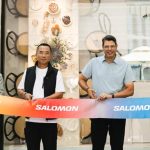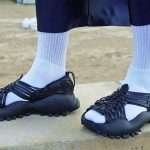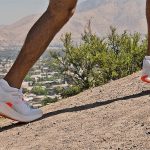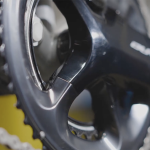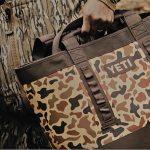Last week marked the end of the Super Show, but the biggest news of the week happened outside the confines of Orlandos Orange County Convention Center South Hall. While the show acted as the backdrop three years ago for the coming Gart/TSA deal that formed the first truly national sporting goods retailer, the news last week that the retailer will now go private in a $1.3 billion deal happened far away from the show floor. While the buzz on the floor the first day of the show was expected to be about the last hurrah for a trade show that had once been the center of the industry, the news quickly turned to the short tenure of the CEO at the company that is the current center of the industry, as Nike Inc. announced in the early hours Monday that Bill Perez was calling it quits as the companys chief exec. Throw in the fact that adidas acquisition of Reebok cleared the last regulatory and shareholder hurdles, and the demise of the Super Show quickly fell to the bottom of the news queue last week.
If all boats rise and fall with the actions of a particular company, then The Sports Authority created a tsunami on Wall Street last week for the sporting goods retail market, which grew at roughly three times the rate of the overall S&P 500. TSA shares jumped more than 17% for the week to close at $36.38 on the news that The Sports Authority had agreed to be acquired by an investor group and TSA's senior management team. The Street apparently agreed that the sports retail market was a pretty good place to invest for private equity firms flush with cash and very few places to spend it.
The deal, which will be led by Green Equity Investors IV, L.P., an affiliate of Leonard Green & Partners, L.P., was priced at roughly $1.3 billion in cash including assumed debt. The offer would see TSA shareholders receive $37.25 per share, about a 20% premium over the previous Fridays close. The TSA board of directors unanimously approved the merger agreement and recommended that TSA shareholders adopt the deal.
But apparently not all shareholders will quickly fall in line as some wonder that, if this valuation makes sense, why not see what the top is for TSAs valuation? That question was evidently on the mind of at least one investor group that filed suit in Delaware charging that the deal would not maximize shareholder value.
The run-up in TSA shares last week may indicate that the Street sees other bids coming. While Green has a history with the former Gart management they bought the company once before, took it public, and were instrumental in the acquisition of TSA the allure of a bigger pay day could lead other investors to pressure the company to assess the retailers maximum value in the market. But TSA already appears to have that piece covered. The merger agreement calls for TSA to conduct “a market test for the next 20 days to ensure that the transaction is the best available for our shareholders.” That value could come in the form of another PE firm, or a potential deal with Dicks Sporting Goods.
While analysts doubt the Dicks option, it would have to be considered. There is minimal overlap, so that end of a possible merger deal makes sense, but DKS would need to decide if they wanted to take on all the old real estate TSA/Gart acquired in the previous Oshmans and SportMart deals. TSA is well under way converting all Gart, SportMart, and Oshmans stores to the Sports Authority nameplate so another name change to Dicks Sporting Goods would probably cause more confusion for the consumer than it is worth.
TSA Chairman and CEO Doug Morton said the move to go private will give the company “greater flexibility to accomplish its long-term goals,” a luxury most public companies do not enjoy. The company has been spending big for the last two years to clean up the old TSA formats, but still has a way to go in creating the environment management hopes to deliver to the consumer. That will take time, money, and patience, none of which will be afforded the company by Wall Street.
Speaking of lack of patience and time, the second big story of the week had Phil Knight losing the former and Bill Perez running out of the latter as the tenure of the rookie Nike Inc. CEO came to a screeching halt just thirteen months after he took the reins from Knight. Perhaps the biggest surprise here is not that it happened so soon, but the fact that no one seemed surprised. While Perez, who is an avid runner and appeared to fit in from that perspective, came from a family-owned company at SC Johnson, nothing could have prepared him for the deep cultural aspects of the Nike Inc. campus. While he worked carefully to move the company in the right direction to stake its claim as a global multi-brand corporation, there appeared to be some concern that he first had to understand The Brand, a mission that is very difficult to achieve without really living the culture inside the berm.
“Basically the distance between the company that Bill managed in the packaged-goods business and Nike and the kind of new athletic equipment business was too great for him to make that leap,” said Knight during a conference with analysts and investors. “The canyon that was there to leap was much greater than what I figured.”
Knight said that despite posting record sales and earnings results, the company was operating at about 80% efficiency under Perez. “I think that the failure to really get his arms around this company and this industry led to confusion on behalf of the management team,” said Knight. “I didnt see that getting better.”
For his part, Perez saw the biggest issue with Knights inability to let go. In a number of interviews after his “resignation,” Perez said he didnt fault Knight for attempting to hold onto the company he founded and grew to the worlds largest sports brand. Perez did take issue with the level of communication between he and the founder, citing instances when Knight would comment on certain issues through third parties, often Perezs own subordinates. Knight said he brought in Perez to coach and mentor the senior management team, but often found the team was spending too much time attempting to teach Perez the Nike way.
Those subordinates are now expected to rise to a new challenge as Mark Parker, formerly co-president of the Nike brand, takes the reins as president and CEO of Nike Inc. Charlie Denson will now have sole responsibility for The Brand. In selecting Parker, Knight goes with a 27-year Nike brand veteran with strong product background, but little international experience on the operating side. The move gives Knight the opportunity to maintain a very firm hand on the direction of the company and pull back more gradually this time around.
Nike will pay Perez $4.5 million in salary and bonus and spend another $3.6 million to buy out his Portland house and reimburse him for remodeling expenses.
While Nike Inc. settles back into the Knight way, its largest competitor made strides last week to narrow the distance between the two companies. adidas Group is a few steps closer to its acquisition of Reebok International Ltd. after the deal passed European Commission regulatory hurdles and garnered a 98% affirmative vote by RBK shareholders. The industry will now have to wait and see what adidas has in mind for one of its largest rival brands, but the market appears to be pretty aligned on the thinking that adidas will clearly move to develop a stronger presence at the top of the pyramid utilizing the assets that make sense. How it will position Reebok against adidas in the market will be the next major question to be answered.
The EC concluded that the “transaction would not significantly impede effective competition in the EEA or any substantial part of it.” In giving their approval for the deal the Commission said that “adidas and Reebok have slightly different brand and pricing positions,” with adidas perceived as a professional, technically-oriented brand with strong European roots, while Reebok predominantly targets young people and women and is more of a “leisure” brand. They also said Reebok had a stronger presence in American sports that are not excessively popular in Europe and the brands image in Europe is “weaker than those of adidas or the worldwide leader Nike.”
The EC said it found that “adidas is positioned in the medium to high price points, while Reebok is stronger in the low to medium price points.”
While these changes will surely alter the landscape of the industry over the next few years, there will be less impact felt with the demise of the Super Show. What will be missed is a central gathering venue that helps define “The Industry,” rather than the fragmented group of associations, buying shows, and conferences that provide slices of the world in which we operate.
A few loyal exhibitors like McDavid, Mueller, Russell, Reebok OnField, and Everlast held on to the very end to show support, but the last breathe of the once mighty Super Show was witnessed by none but a handful of those that once graced the halls, aisles, and every nook and cranny of the Georgia World Congress Center.
SGMA will roll out two smaller venues in 2007 (< ahref="http://www.sportsonesource.com/news/sew/sew_article.asp?section=5&Prod=3&id=13937">SEW_0602), but the timing and participation of vendors is still in question. The dates appear to fall in line with current buying group shows, which are must-attend events for the team sports brands that continued to support Super Show. This will make it hard for those companies to choose. There is talk of consolidating those shows with SGMAs venue, but each are a profit center for the groups that organize and run them and has to be considered in any deal.
The other main support for the show has been the licensed products companies, but those companies will be enticed to join Super Show management company CSM and principals Hardy and Stanley Katz in Vegas in November for their Sports Licensing show.
In the end, this will probably come down to support from the footwear vendors. The June dates for SGMA Spring Market in Las Vegas in June 2007 appear to be the right time for the footwear folks to get in front of their retailers, but the question remains whether they will see the value in taking the chance. If SGMA can get the footwear support, many of the team sports vendors will need to consider the show as well, according to comments made to SEW by a few CEOs. They would rather see SGMA and the buying groups work together on a solution.
As for the announced October event which is expected to be held in a yet unnamed east coast location, the timing here appears to be a bit early for all but a few. November looks to be the timing of choice for a Fall Market, but SGMA will need to reconcile the dates with the need for the team guys to sell in spring product.
All in all, it was perhaps nostalgia that brought many to Orlando for the last hurrah, a chance for some to be at the first and the last show (and probably 19 others in between). SGMA president and CEO Tome Cove appears to be genuinely focused on creating an event that can again be the central gathering place for this “The Industry.” Many still hope he can pull it off, but acknowledge he cant do it without the support of the SGMA board to pitch the concept to their peers and competitors.

